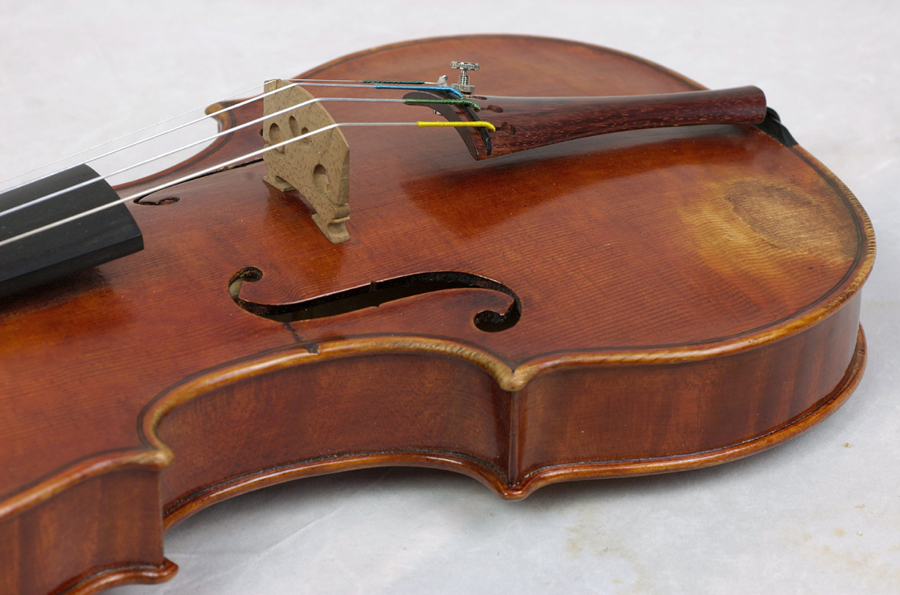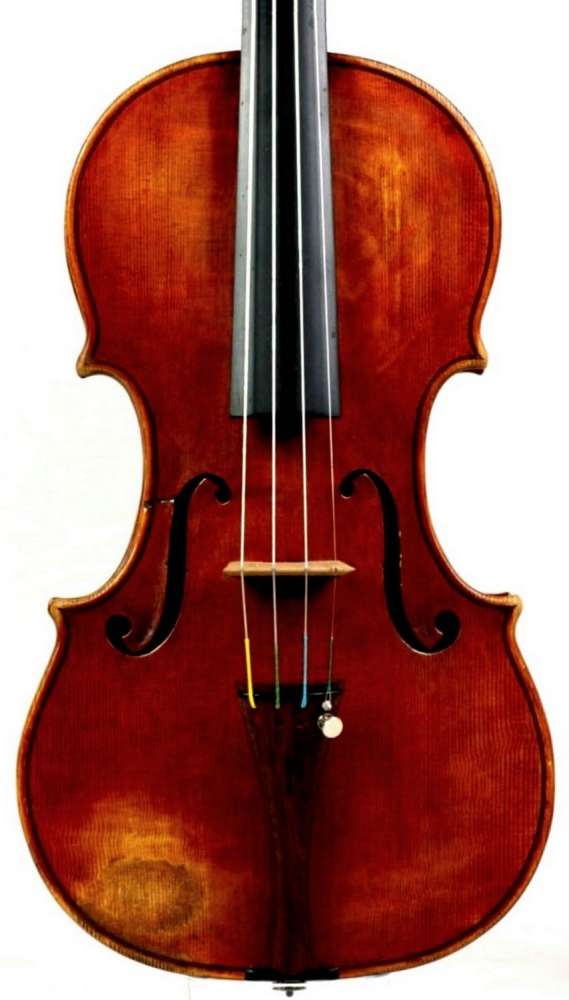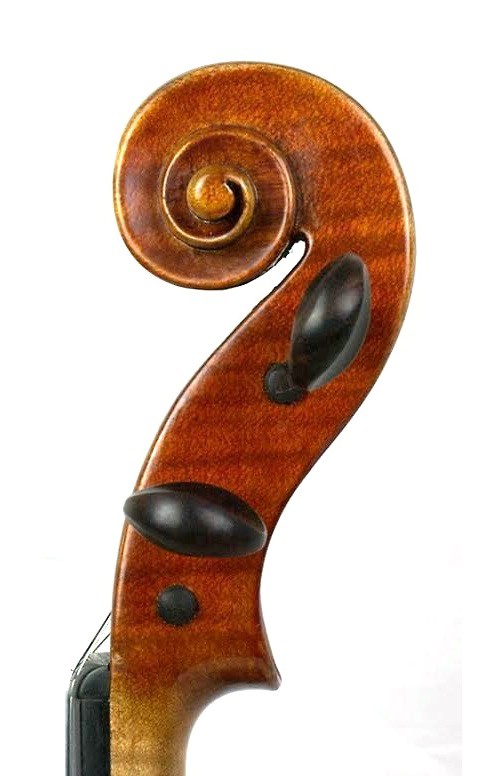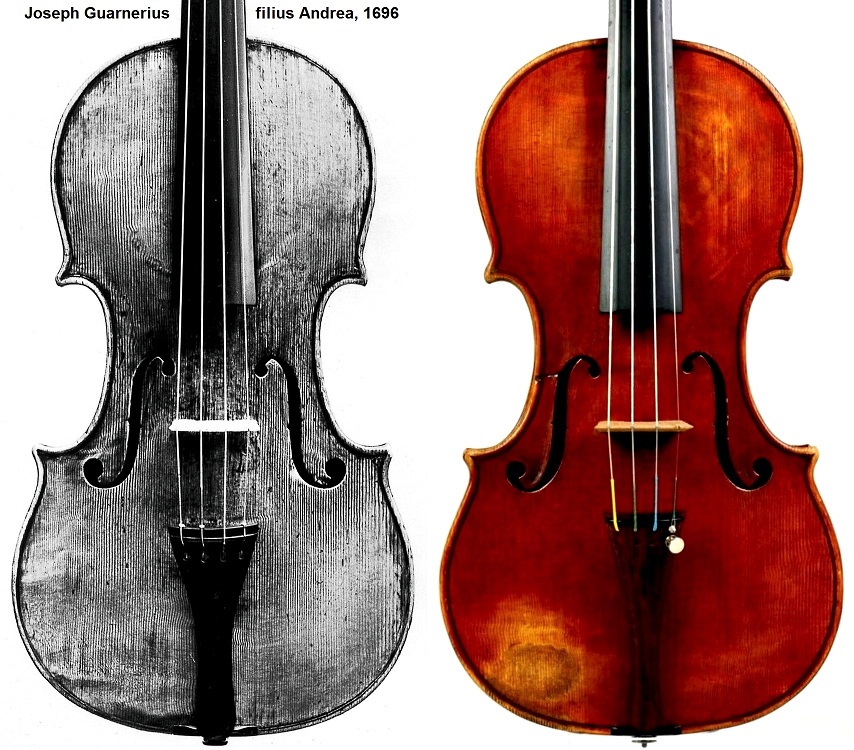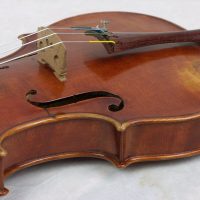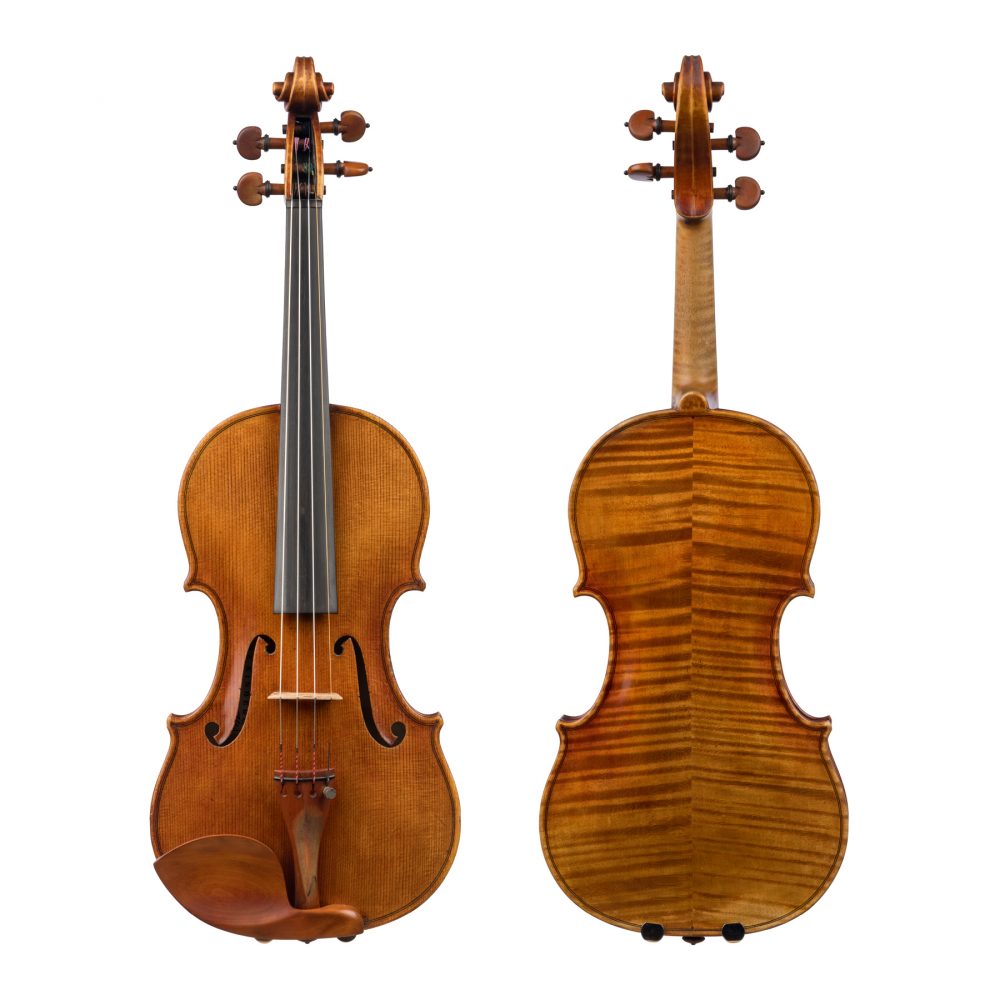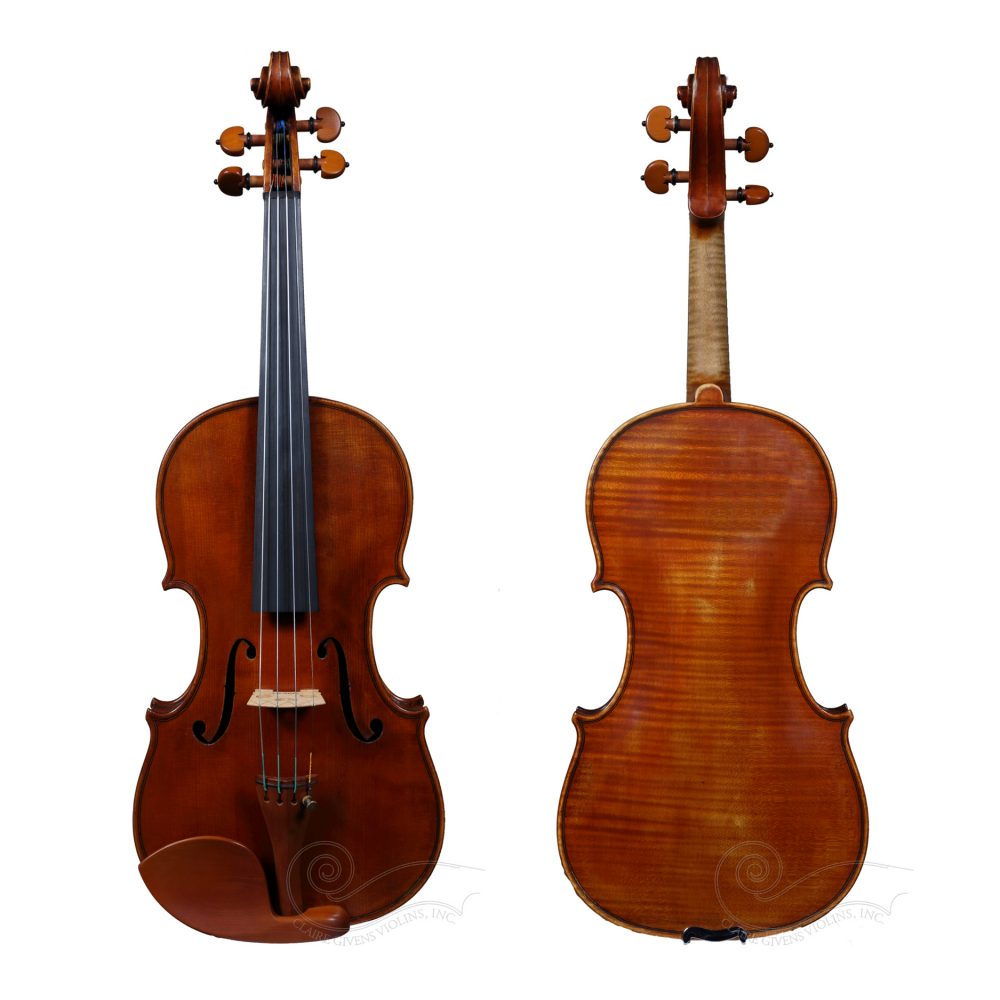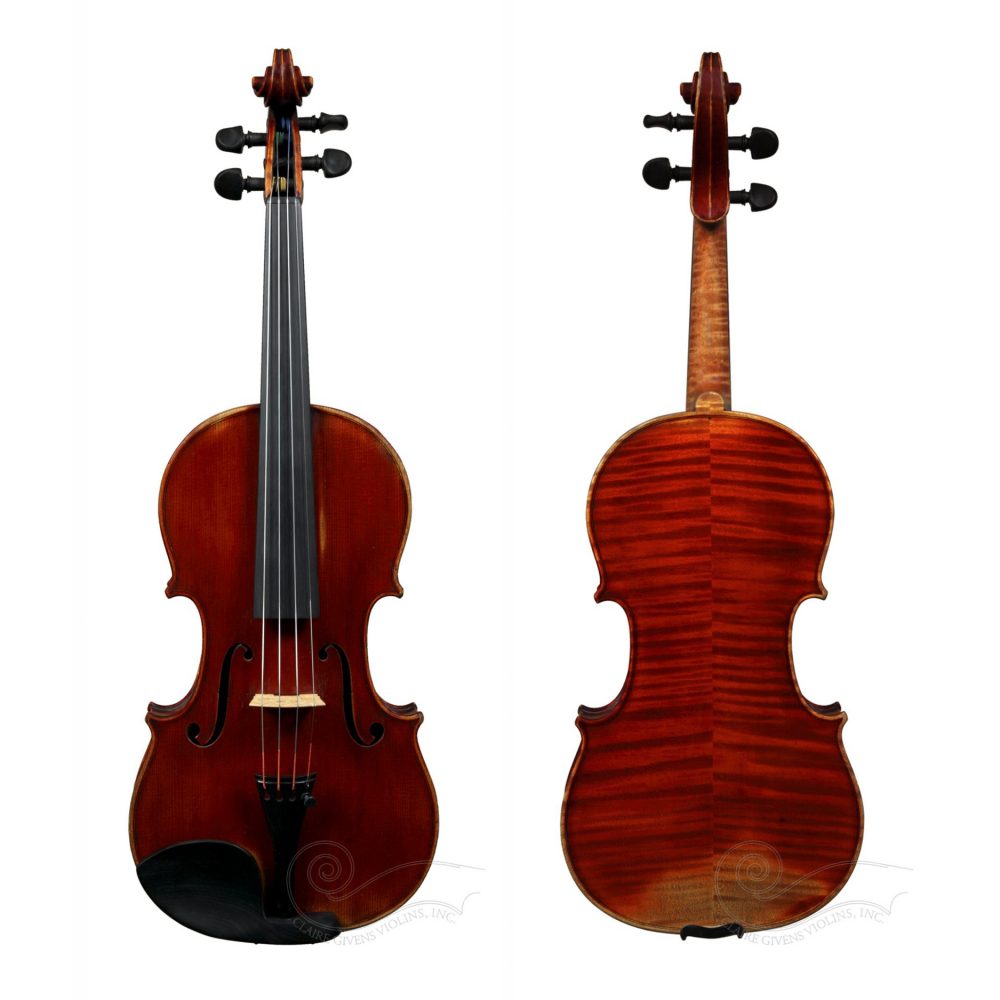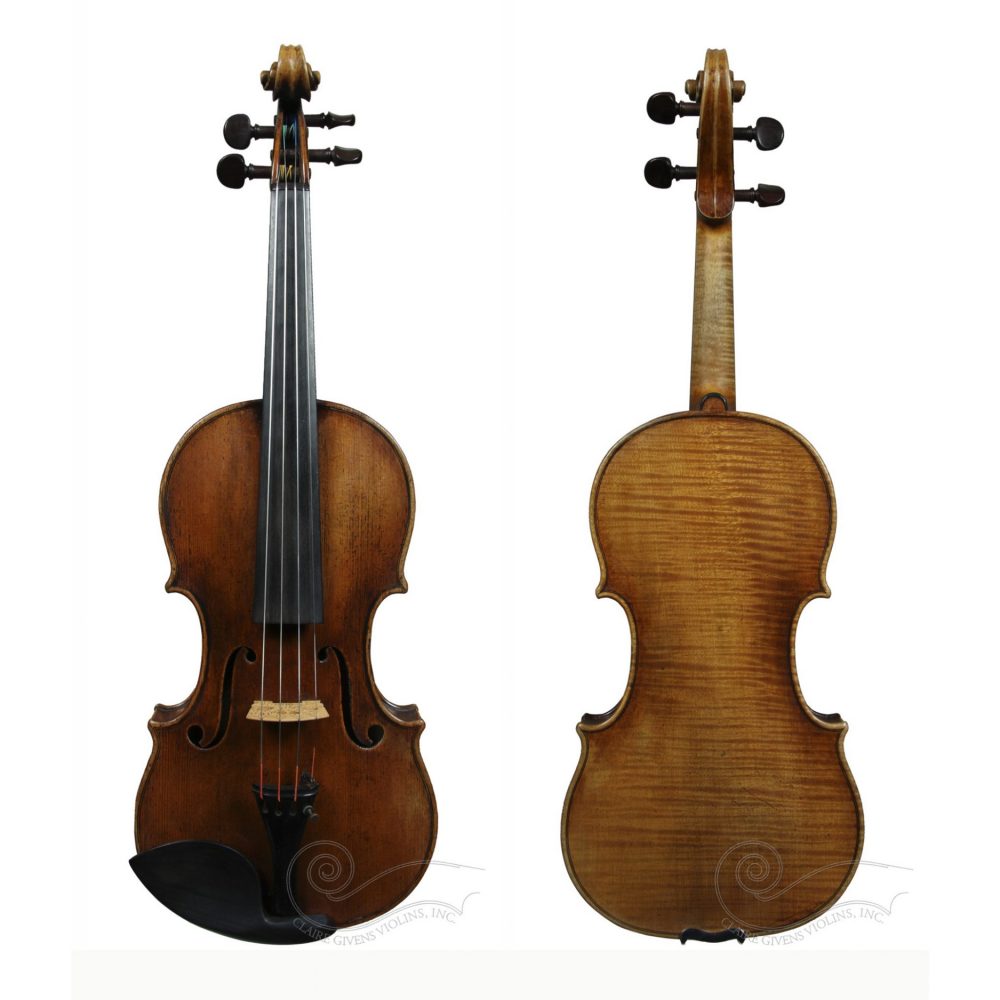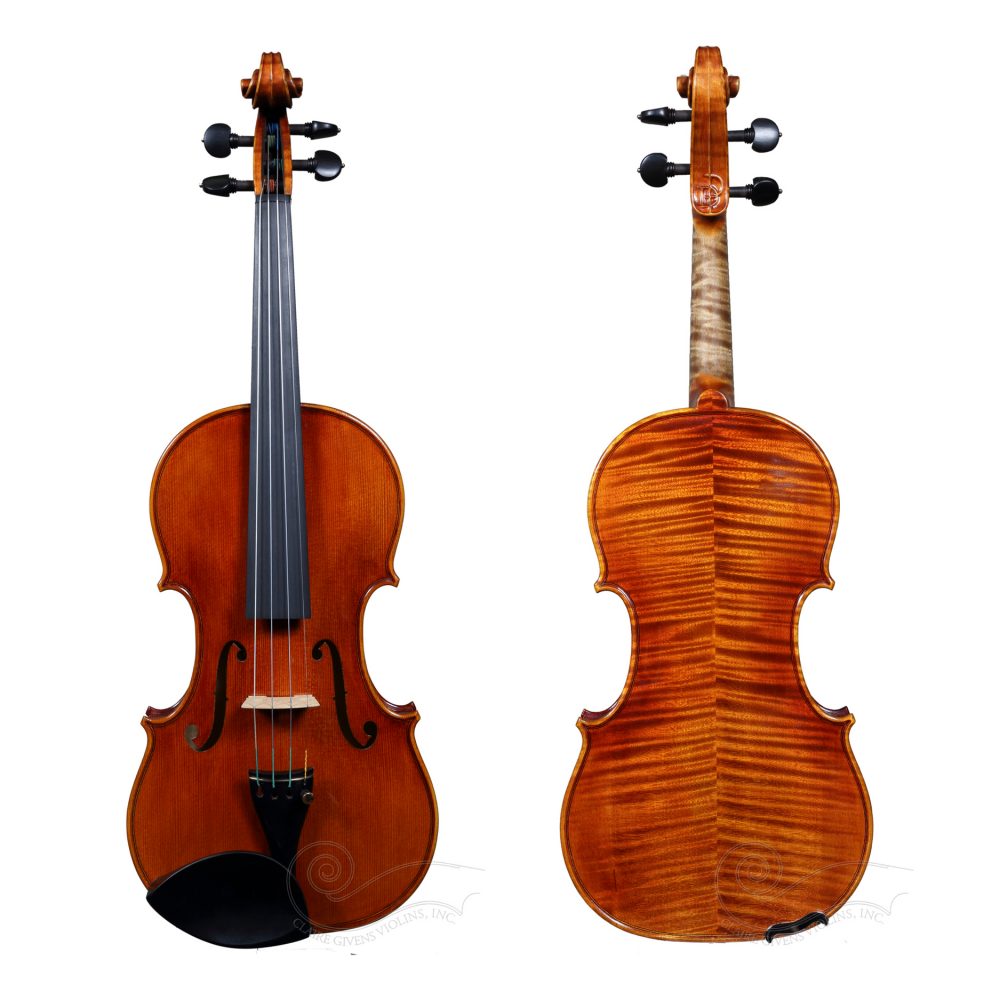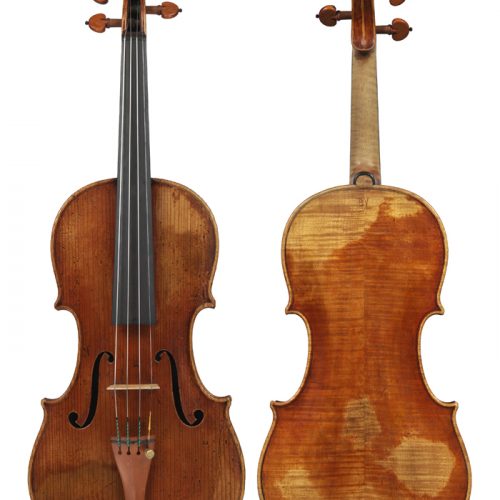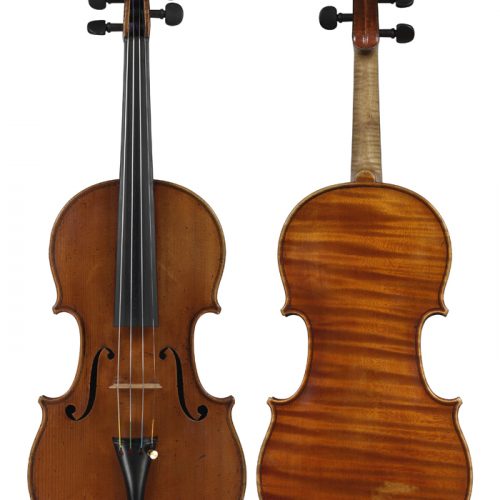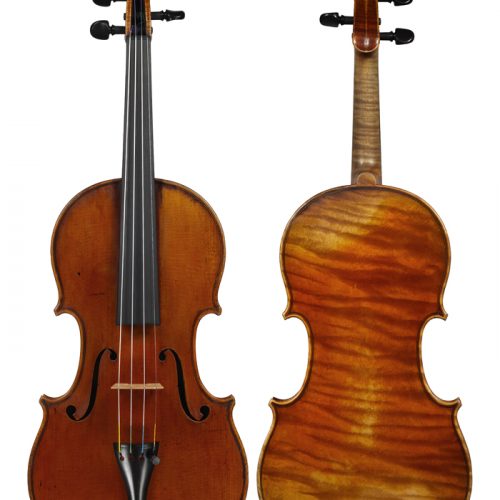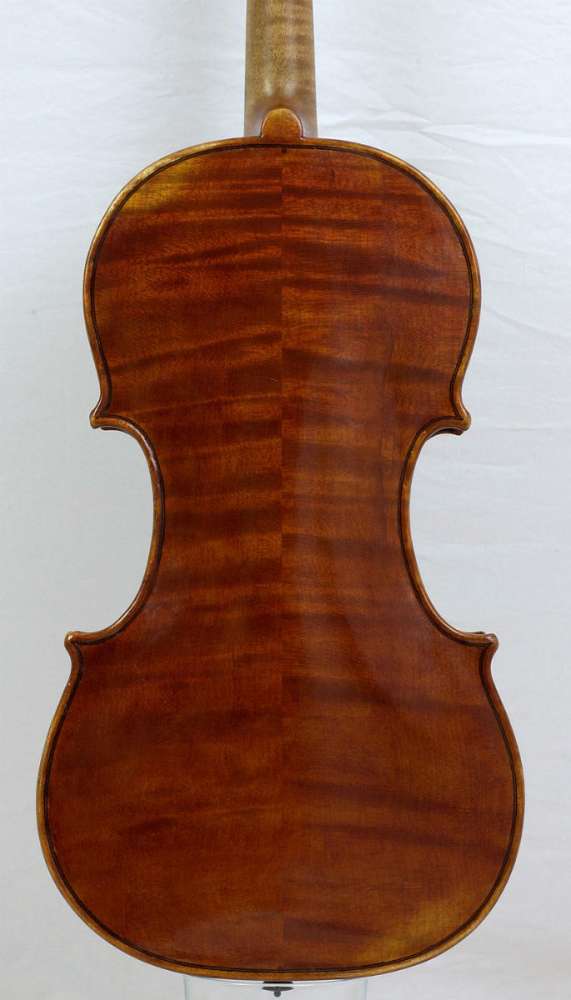
We are very fortunate to offer one of the premiere violins from the hand of the greatest violin maker who ever lived. This instrument is in a most excellent state of preservation. It still bears the maker’s undisturbed original label, dated 1733. The original neck remains intact, and the one piece lower rib remains uncut. The cover image depicts a distinct knot in the bass center bout, through which the master chose to cut the purfling groove, rather preferring to not allow such precious, and costly material go to waste. Another anomaly can be seen in the back of this instrument, in the form of a patch (with rounded ends) under the varnish, which is fully characteristic of this maker’s work, during the period. The Stradivarius violin, “Il Cremonese”, dated 1715, also bears a back patch of similar proportions. Selah! Please see the next to last image for this detail, close up. English speaking luthiers know the German term “hazelficte” as ‘bear claw spruce’, mainly because the irregular, crescent-shaped figurations looks like scratches from a bear. Italian luthiers, more properly, call this type of wood abete macchiato. Clearly, as we can see in the last montage, Joseph Guarneri filius Andrea, also used this same type of wood dating back to 1696! Doubtless, the Patriarch of the Guarneri family preserved some for future use. The varnish looks absolutely spectacular when viewed outside during daylight hours, as the sun approaches the horizon from the east or west, most especially on days when skies are overcast. The greatest Italian violin expert, Simone F. Saconni, dedicated the last chapter of his landmark book, “Il Segreti” to describing the visual characteristics of the OLD Italian varnishes; a must read for all violin connoisseurs. Back length: 349.5 mm. Serious inquiries only, please.



